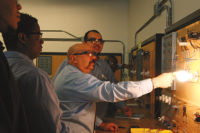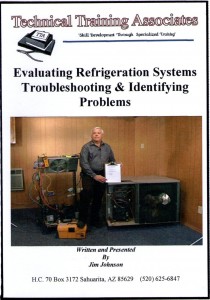While virtually all types of buildings and structures in Houston are susceptible to mold growth, area schools are among the most affected. Those allowing fresh air in on a regular basis are particularly affected.
Such was the case with Montgomery Elementary School in North Houston. With tropical rain forest-like air constantly infiltrating the classrooms of this 30-year-old structure, signs of mold growth started to surface in late 2001.
'Like a dirty wet sock'
"There were some visible indications of mold in certain areas, and some of the classrooms smelled like a dirty wet sock," explained Kyle Jeane, a HVAC technician with Houston-based Hal Watson A/C Co. "In addition, kids with asthma were becoming affected."In addition to exacerbating asthma, the mycotoxins that mold spores produce are known to be responsible for other problems from suppression of the immune system to neurological damage. School officials asked Jeane to investigate the situation. More specifically, he was asked to gather data on classroom humidity levels and, based on this information, make recommendations on a dehumidification solution. To do so, he would need to set up dehumidifiers in a few classrooms, and provide analytical data showing the difference in humidity between a classroom with a dehumidifier, and one without.
"While you could easily feel the difference in humidity with dehumidification, the school's budget approval process made it necessary to show actual results based on analysis," said Jeane. "This data would ultimately have to be presented to school architects, engineers, and the school board itself."
To record and analyze the classroom climate conditions, Jeane relied on HOBO(r) H8 dataloggers from Onset Computer Corporation. These compact, battery-powered devices are used for continuous monitoring of temperature, rh, light intensity, and other environmental conditions. He was able to hang a logger on the wall in both the humid and dehumidified classrooms using a paperclip on a nail. Once mounted, the loggers started recording temperature, rh, and dewpoint at 30-minute intervals.
After logging classroom conditions for three days, Jeane removed the loggers and offloaded the data onto a PC. For graphing and analysis, he used BoxCar Pro, a Windows-based software program that accompanies the dataloggers.
"The software was very user-friendly and it only took a few minutes to get all the data collected into nice graphical charts," he explained. "From the charts, we could immediately see a dramatic split in terms of humidity rates in the two classrooms. The classroom with the dehumidifier was running at 45% humidity, while the other was closer to 95%. This was tangible evidence that our dehumidifiers were able to override the high dewpoints and pull the humidity down to a safe level."





